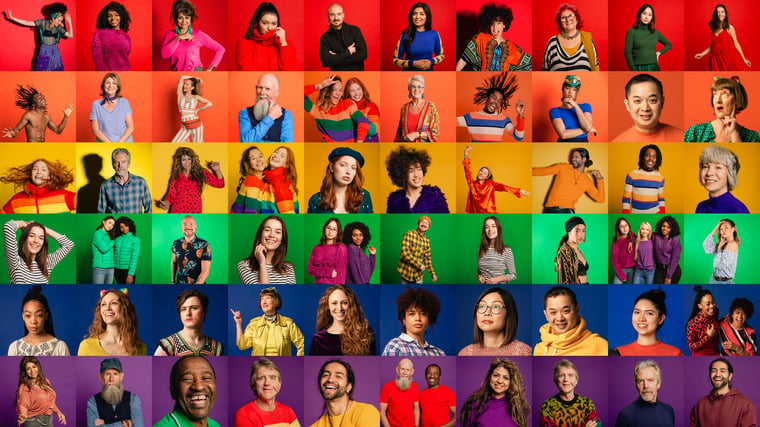As businesses around the world work toward supporting inclusion and diversity initiatives, they’re discovering that building an inclusive culture starts with ensuring they have a diverse employee population. However, even when some companies intend to hire more diverse candidates, organizations have historically struggled to meet that objective.
Although technology has transformed the way in which we recruit and interview candidates, one major lingering limitation remains: our employees’ natural unconscious biases. Whether or not we are aware, our preferences and implicit stereotypes affect our perceptions of others, and this can be detrimental to bringing on new diverse talent.
Which biases are affecting the hiring process, and how can we prevent them from influencing our decisions? Let’s examine the four stages of recruitment for ways to reduce bias.
Stage 1: Prepare yourself in advance to reduce your unconscious bias
Biases to look out for: Bias Blind Spot, Naive Realism, Affinity Bias
You’ll want to set yourself (and your candidates) up for success by initially acknowledging your own biases. We as humans are biologically wired to take mental shortcuts to make quick decisions. However, these shortcuts can do more harm than good when it comes to making important choices.
Before you begin to interview your candidates, set aside some time to examine your bias blind spots, also known as the biases you may not even realize you have. Sounds like an oxymoron, right? That’s your naive realism talking—the idea that we believe we see the world objectively and without bias.
It’s important to objectively review your own potential biases in advance of the interview so that you can use self-awareness to be mindful of the language you use and the questions you ask. Write down your biases so you can refer to the list during the consideration process after the interview. A common bias that many experience during the recruitment process is the affinity bias, where we look for candidates who seem to be a “culture fit”. Often, this “fit” means that we identify with something in the candidates’ background that makes them more relatable, such as the school they attended or their hometown. You may be more likely to choose the candidate that you share commonalities with than the candidate that is less relatable but who may be more qualified.
Stage 2: Protect against application and pre-screening bias
Biases to look out for: Gender Bias, Implicit Association
Now that you’re ready to begin the recruitment process, make sure to set goals for diversity and try to avoid unnecessarily exclusive selection criteria. Rather than opting to select a candidate based on their attendance of an Ivy League school, you could aim to select an individual who attended an HBCU (historically black college/university). Maybe, instead of choosing candidates based on GPA or quality of their education, choose to prioritize experience and skills. Remember, the goal of the initiative is to bring in different perspectives that will push your company to grow in new and innovative ways.
Next, let’s look at the job posting itself. Examine the job description to remove as much bias as possible. For example, job descriptions that refer to the candidate as “he” or use adjectives traditionally associated with men (“independent,” “assertive,” “courageous”) can be exhibiting gender bias and may be less likely to receive applications from female candidates. You can also remove any potential implicit association (unconscious stereotypes) regarding ethnic background by removing candidates’ names from the screening, letting the resume speak for itself.
Finally, using skills assessments during the pre-screening process will help you to verify candidates’ knowledge objectively when choosing your top talent to advance to the next stage—the interview.
Stage 3: Interview biases to avoid
Biases to look out for: Primacy Bias, Confirmation Bias
The interviews are scheduled, and you’re ready to meet the candidates. What’s next?
When meeting the candidate, your first impression can determine your primacy bias—be aware of how those first thoughts can influence your impressions of the candidate throughout the interview. The person’s physical appearance, such as their weight, speech patterns, posture, and facial expressions can factor into your first impressions and bring subjectivity to your evaluation. Having multiple interviewers, especially those from diverse backgrounds, helps to reduce the impact of an individual’s primacy bias.
Your first impressions can also impact your confirmation bias, when your unconscious biases validate your opinions about a person’s competency as the person responds to your questions during the interview. Again, being mindful of your observations and how your biases could impact your impressions is key to reducing their impact on the interview.
Stage 4: Critiquing your candidates - biases during final selection
Biases to look out for: Groupthink, Recency Bias
Once the interviews end, it’s time to decide which candidate would be the best choice for your organization. Revisit the diversity goals you set at the beginning of the interview process. If you’re discussing the candidates as a team, avoid groupthink by writing down your own assessment of the candidates before sharing your thoughts with others. Refer back to your written list of biases when analyzing your notes to see where you might have shown bias. Your notes will also come in handy to reduce your recency bias, also known as the tendency to remember the most recent interviewees better.
When looking at the pros and cons of your candidates, Kristen Pressner, Global Head of People & Culture for Roche, suggests to use the “flip it to test it” method: if you were to substitute the background of the candidate for someone of a typical hire, see if you would feel differently about the candidate’s responses.
Reducing bias is an ongoing process
If you’re overwhelmed by the amount of biases to consider, it’s understandable. Although scientists have been studying bias for decades, most of us have not been trained to recognize bias within ourselves as an ongoing practice. But these practices can be learned and ingrained into our systemic processes.
Blue Ocean Brain can help with the ongoing learning, exposure, and mindfulness that is required to shift mindsets and transform work cultures. We’re here to help educate your employees on unconscious biases, better recruitment strategies, and other DEI topics that will upskill your people to achieve your diversity goals.




